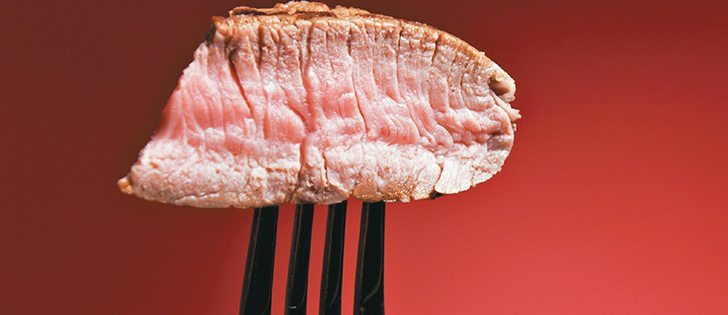The cattle business could learn a few tricks from the wine industry, says Canada Beef’s market development director.
Stylish, sentimental television commercials and that memorable tagline — “we will sell no wine before its time” — helped Ernest and Julio Gallo become household names in the 1980s.
They also helped sell a few bottles of California wine.
Jim Bradbury said the story of a Porterhouse steak isn’t that different from a Pinot Noir.
“In the 1970s, you could go to a restaurant and somebody would ask you, ‘do you want a white or a red (wine)?’ Those were the two choices,” Bradbury told the Manitoba Beef Producers annual meeting in Brandon Feb. 6.
Read Also

Message to provincial agriculture ministers: focus on international trade
International trade stakeholders said securing markets in the face of increasing protectionism should be the key priority for Canada’s agriculture ministers.
Nowadays, restaurant servers can provide a 10 minute spiel on the type of grape, the unique volcanic soil beneath the vineyard, the microclimate of the region and the life story of the dedicated craftsman behind the wine.
Bradbury said Canadian beef producers are missing an opportunity because the history of the steak on a restaurant plate might be just as fascinating as a $40 bottle of wine.
“Guess what? It takes about three years to get that steak to your table,” he said. “Yet that $50 steak on the table, nobody mentions anything.”
He said everyone in the value chain from ranchers to waiters should be able to talk about the grass or grain the animal ate, the quality of the soil on the farm, who raised the cattle and the ethical practices of that rancher.
“Nobody mentions anything about it,” Bradbury said. “(This) is a story we need to get better at telling. Everybody in this room needs (to know) how to tell that story.”
Much like the Gallo ads, building an emotional link between a rancher and a consumer will be a cornerstone of any beef marketing campaign.
As an example, Federated Co-op and Canada Beef initiated a “Raised at Home” marketing program, which tells the stories of ranchers in Coch-rane, Alta., Hudson Bay, Sask. and Inglis, Man.
Bradbury said consumers need to know that producers are making ethical choices for the environment and their animals.
“We will do what is right…. This is a promise that everyone in the industry needs to live.”
Trish Sahlstrom, vice-president of purchasing and distribution at A&W Canada, agreed that the connection to a farmer is critical because today’s consumer is skeptical or highly cynical about food production.
“What we see is more distrust, in science and big business,” said Sahlstrom, who also spoke at the MBP meeting. “The new consumer is confronted by shortages of time, attention and trust.”
A&W launched its controversial Better Beef campaign in 2013, committing to selling only burgers that were “raised without the use of hormones of steroids.”
The decision sparked a furious back-lash with ranchers and producer associations calling the campaign misleading, inaccurate and a threat to the broader beef industry.
Sahlstrom said North America’s beef industry has been declining for decades as people eat fewer burgers, steaks and ribs. Consumers lost faith in the industry because of fears surrounding BSE and E. coli, but a bigger narrative eroded the public’s trust of all agricultural production, including cattle.
“It comes from all the stories that have been so prevalent, so very long, about how badly we’ve abused our Earth, how badly we’ve abused the animals that feed us … how badly we process foods,” she said.
“There isn’t a media out there that hasn’t covered those stories.”
Sahlstrom said participants in focus groups and surveys said by an overwhelming margin that they where concerned about three things in beef: steroids, antibiotics and hormones.
“It wasn’t too tough a decision for us to make,” she said.
“They (consumers) want to know that it (food) is real, that it hasn’t been changed.”
A&W doubled down on its beef campaign in 2014 by promising to sell chicken raised without antibiotics and eggs from hens that are fed a vegetarian diet.
Bradbury said businesses must deliver on consumer expectations, but marketing campaigns can have implications for farmers who supply those restaurants.
“One thing that would’ve been of interest to Canada Beef, if we had a chance to work with A&W on the wording that they chose to use (would have been) that connection to producers.”
Sahlstrom said it’s important to remember that businesses have to attract and retain customers. As a result, companies must respond to changing expectations.
“In order to do that … you have to be aware of what the customer is desiring,” she said.
“It is the responsibility of business leaders to do what the customer wants, not to get the customer to do what the organization wants.”
Bradbury agreed.
Lecturing or educating the public about certain agricultural practices isn’t a viable marketing strategy.
He said the beef industry needs to listen and talk to consumers so that the relationship resembles a community.
“Have a conversation with them … rather than us trying to tell them what we think they need to hear.”
















